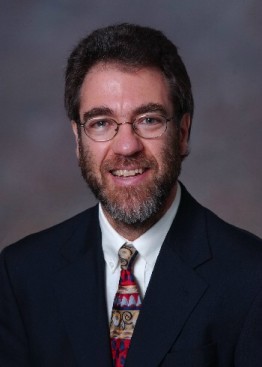
William Hersh, MD
Professor and Chair
Department of Medical Informatics & Clinical Epidemiology
Oregon Health & Science University
Although summer is historically “down time” in academia, this summer has been anything but down. Like many people in the health IT arena, I have been busy with two Office of the National Coordinator for Health IT (ONC)-related projects. In this post, I thought I would take the opportunity to provide an update on the ONC workforce development programs in which my institution, Oregon Health & Science University (OHSU), is heavily involved.
One of the programs in which we received a grant is part of three interrelated programs. These programs collectively aim to rapidly build the front-line workforce to achieve the EHR adoption goals of the HITECH legislation. The project we are involved in is the Curriculum Development Centers Program, where five universities (OHSU, Columbia, Duke, Johns Hopkins, and UAB) are developing instructional materials for another program, the Community College Consortia to Educate Health Information Technology Professionals Program. The latter program is funding five regional consortia to deliver short-term six-month certificate programs that focus on six workforce roles that ONC envisions as required to achieve the HITECH agenda. About 80-85 community colleges are in the five regional consortia, all of whom are developing short-term certificate programs around the workforce roles, which will commence this fall.
The five universities are each developing four “components,” which are roughly equivalent to semester-long courses, for a total of 20. Each community college will be free to use all, some, or none of the instructional materials we are developing. ONC has designated a “set table” of these components for six workforce roles to which the community college certificate programs will teach.
The OHSU Curriculum Development Center is further designated as the National Training and Dissemination Center (NTDC). We have the additional tasks of training the community college in the use of the materials and developing a dissemination Web site to host them and collect feedback. A major part of the training task will be a training event that will be held August 9-11, 2010 in Portland. About 250 community college faculty will attend the event to receive training in the use of the materials. The event will also feature other sessions on education-related issues, such as implementing distance learning in health IT and how to manage classes that comprise students with it backgrounds and students with healthcare backgrounds.
The dissemination Web site will host the materials that all community college faculty from the 80-85 community college partners can access. They will be able to use the materials “out of the box” or mix and match pieces of them with other curricula at their institutions. All of the materials are distance learning-oriented, not only slides and lesson plans but also voice-over-slide narrations.
Another project that the Curriculum Development Centers project touches on is the Competency Examination for Individuals Completing Non-Degree Training Program, which will assess the competencies attained by graduates in the community college programs for the six workforce roles.
OHSU is also involved in the fourth and final workforce development program, the University-Based Training (UBT) Program. This program will fund longer (but still short-term) study in six additional workforce roles in university settings. OHSU is one of nine universities or consortia thereof (OHSU, Colorado, Columbia, Duke, George Washington, Indiana, Johns Hopkins, Minnesota, and Texas Tech) that will be using the grant to subsidize students in Type 1 (less than one year) and Type 2 (1-2 year) programs.
OHSU is implementing the UBT grant as a source of financial aid for our existing graduate programs. More information can be found on our web site, which has a new redirection URL. Type 1 students are funded to complete our Graduate Certificate Program in one year, while Type 2 students will be funded to complete the Master of Biomedical Informatics (MBI) program in 18 months of full-time study. As OHSU is on an academic quarter system, with four quarters of equal length, Type 1 students will need to take an average of two classes per quarter to complete the program in one year. This is more than the typical student in the program who works full-time and would find more than one course at a time challenging. The MBI program requires 52 credits, with 46 in courses (about 16 three-credit courses) and six in a capstone project. To do the MBI in 18 months will require full-time enrollment over six consecutive quarters. While the regular MBI program can be done on-line (with students required to complete two on-campus short courses during their studies), ONC-funded students will need to be on-campus students.
The OHSU UBT grant will allow 135 Graduate Certificate and 13 MBI students to be funded over three years. We have completed two cycles of applications already for the certificate program and one for the master’s program. Twelve students started the certificate program in the summer term. We have also offered funding to 41 certificate and 8 master’s students to start in the fall. Another round of certificate program applications will take place in the fall for admission in the winter quarter and continue every quarter until the funding is exhausted. A second round of master’s degree applications will take place for the fall of 2011.
Now that the final rules for meaningful use are out, the state health information exchanges and regional extension centers are being launched, research and demonstration are funded by the SHARP and Beacon programs respectively, and the academic programs for workforce development are starting up, all of the major pieces of HITECH are in place. The grand experiment is beginning! Projects like this never quite turn out as you expect, but I am certain that healthcare will be better from all of this, and I am quite confident that a more robust educational infrastructure will emerge from the workforce development programs.
